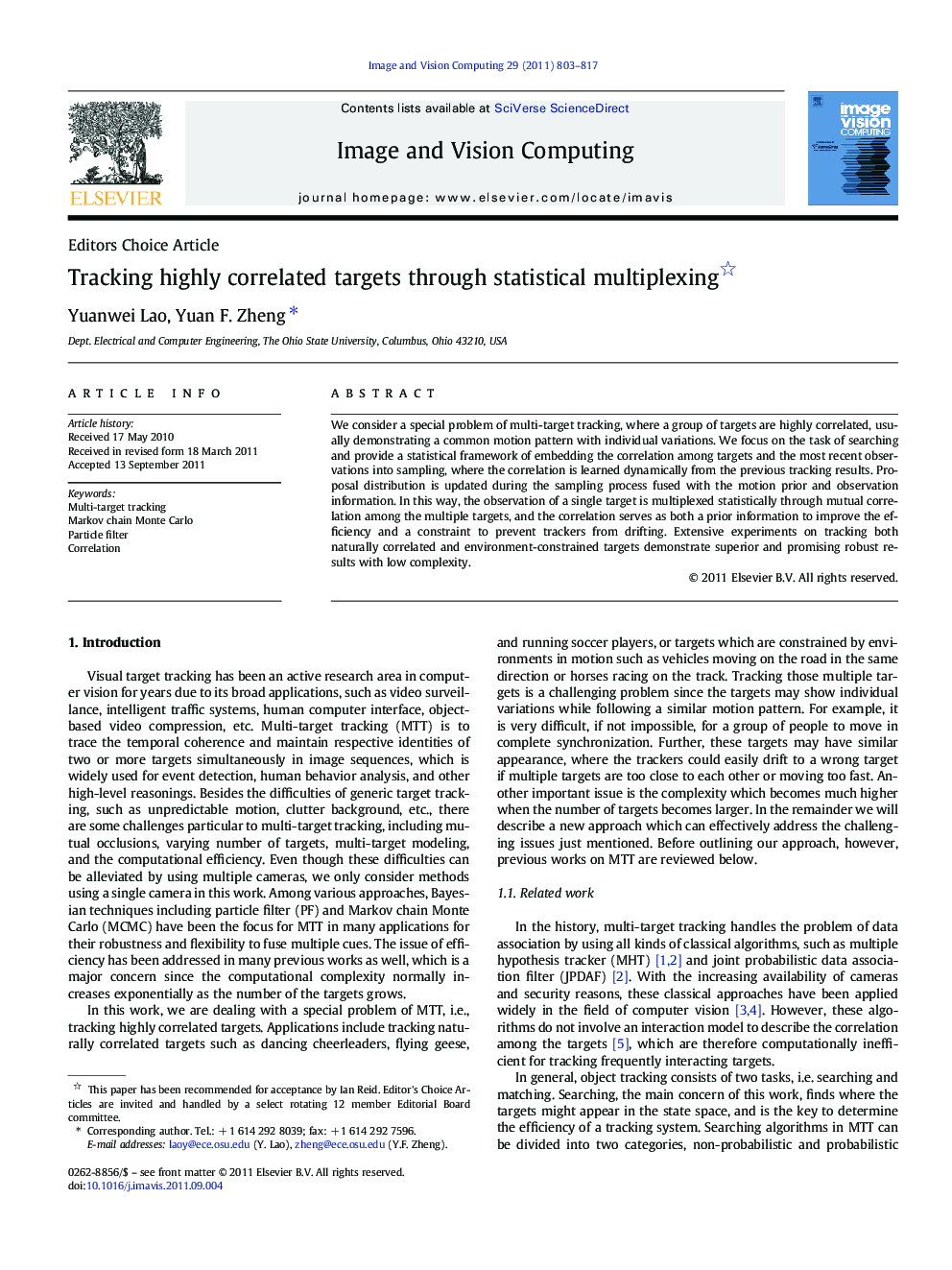| Article ID | Journal | Published Year | Pages | File Type |
|---|---|---|---|---|
| 527112 | Image and Vision Computing | 2011 | 15 Pages |
We consider a special problem of multi-target tracking, where a group of targets are highly correlated, usually demonstrating a common motion pattern with individual variations. We focus on the task of searching and provide a statistical framework of embedding the correlation among targets and the most recent observations into sampling, where the correlation is learned dynamically from the previous tracking results. Proposal distribution is updated during the sampling process fused with the motion prior and observation information. In this way, the observation of a single target is multiplexed statistically through mutual correlation among the multiple targets, and the correlation serves as both a prior information to improve the efficiency and a constraint to prevent trackers from drifting. Extensive experiments on tracking both naturally correlated and environment-constrained targets demonstrate superior and promising robust results with low complexity.
Graphical abstractFigure optionsDownload full-size imageDownload high-quality image (327 K)Download as PowerPoint slideHighlights► In this study, we consider a special problem of multi-target tracking, where a group of targets are highly correlated. ► We develop a statistical framework to embed the correlation among targets. ► Accordingly we modify the proposal distribution for Bayesian based searching using correlated observation of multiple objects. ► We found that the result is a more efficient searching when multiple objects are presented in video sequences.
